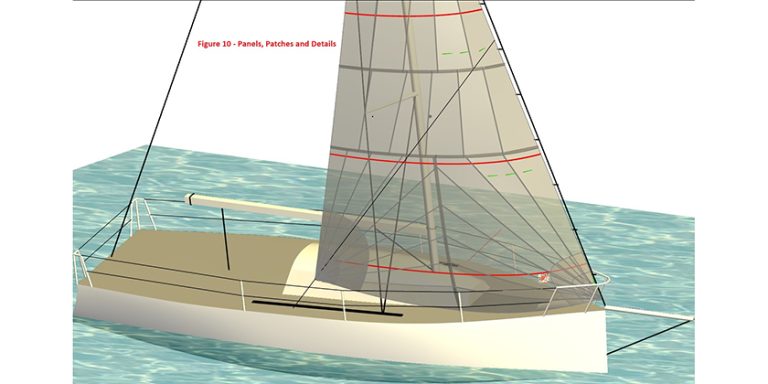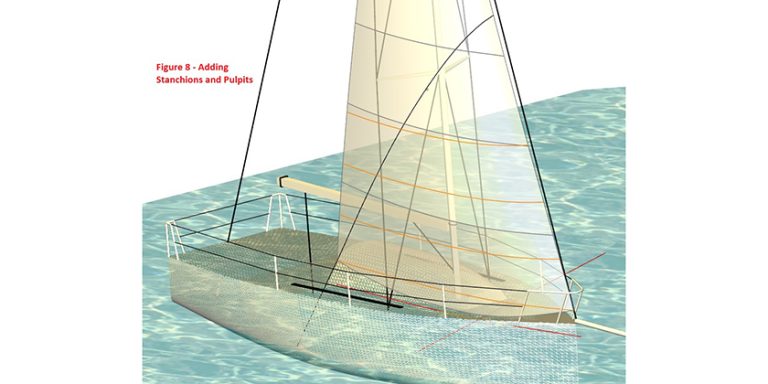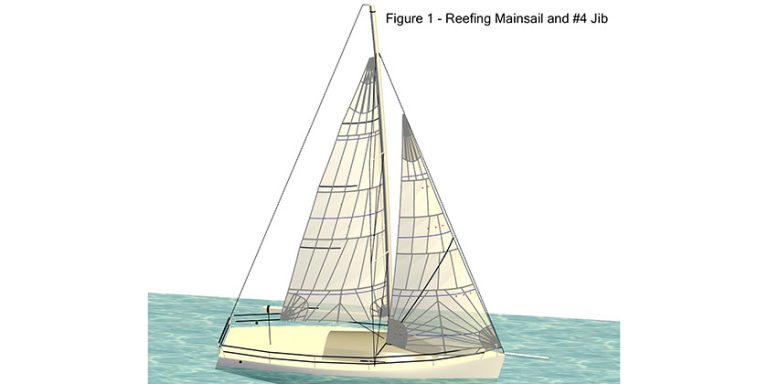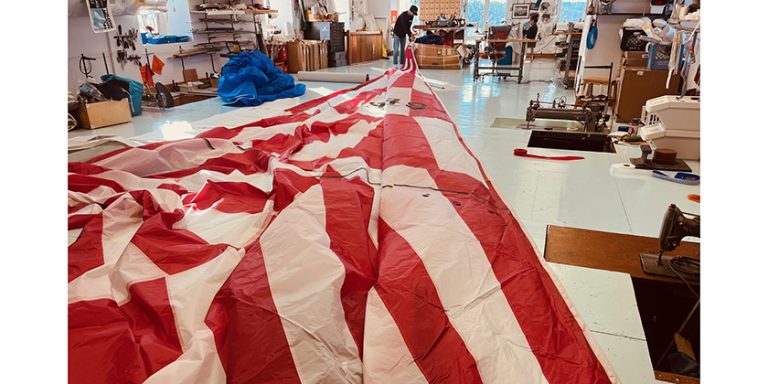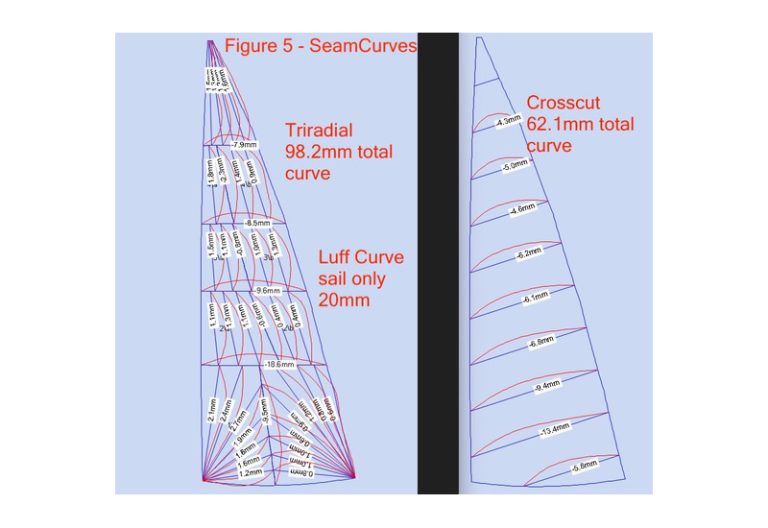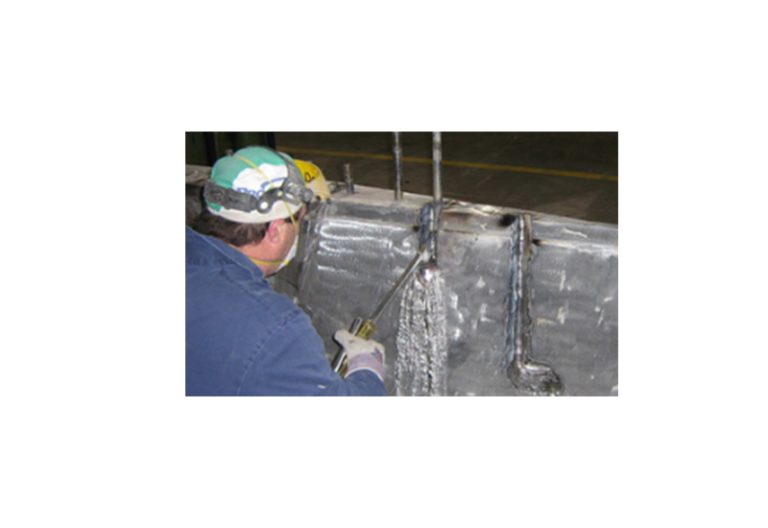Cruising Sails Tech
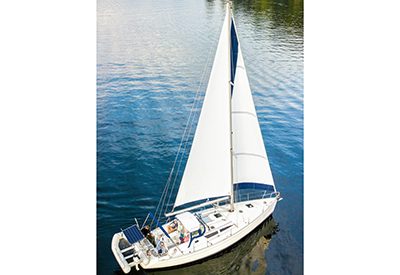
April 23, 2020
Loose Versus Fixed Footed Mainsails
Is one better than the other? What are the different advantages and disadvantages of the two sail styles? And what should you get on your boat? Precision Sails’ Senior Sail Designer, Jeremy Roszmann discusses the details and features of the two sail types.
To cover the topic as much as possible when discussing fixed foot vs. loose foot, there are several things we want to talk about:
- History And Background – Limitations of the cloth available and the design history of sails.
- Efficiency and the power of the sail – The differences in the designed shape of the sail and functionality.
- Trimming & Handling – How to adjust the trim of your sail differently to create a more efficient shape depending on whether you have fixed or loose foot.
- Rigging & Removal – How does it change taking the sail off your boat?
History Of The Fixed Foot And Loose Foot
First of all, let’s talk a little bit about the history and why we transitioned from fixed footed to loose-footed mainsails. Essentially, before the 1980s, almost all mainsails had a fixed foot. There are several reasons for this. Firstly it was traditional to build sails similarly to what was tried and true. Without the technologies available to see the laminar flow and effect of changing sail shape sails were built traditionally. The main one was the availability of higher load-bearing sailcloth, which allowed for more strenuous designs. Even though dacrons were being used in the production of sails the sailcloth was very different from today’s – far stretchier, far lower modulus, requiring more support for sail shape. The process of cutting sails differently and creating a better sail aerofoil for maximizing laminar flow was not common. It was not until the 1980s that mainsails began to be produced with a loose foot and what we found was that there were quite a few advantages to being able to drastically change the shape of a sail.
Efficiency And The Power Of The Sail – The Differences In The Designed Shape Of The Sail And Functionality
In the video, Jeremy shows two designs for a mainsail. One is loose-footed, the other one is fixed footed – Both sails are for the same boat, a client’s Hunter 34 that we’re in the process of designing right now. The biggest difference you can see is a little bit of foot rounding at the bottom, and on the fixed foot, it’s just straight across. When we’re looking to build a fixed footed sail the shape has to taper to the bottom of the belly and make sure that the foot is going to fit in that groove and function properly. The shape of the sail then is smoothed from the foot to the belly.
With a loose-footed sail, we don’t have to worry about smoothing the shape from the belly to the foot of the sail. What that creates is not just a foot round slightly below the boom, but an increase in the sail shape just above it as well. When you start to taper in that section, you end up putting a downward load on the sail right across it. The boom weighs down evenly across the sail and it will start to affect the rest of the aerofoil. As far as to sail shape – loose-footed sails have a better shape as they do not need to taper the shape to a flat section.
Trimming & Handling -Adjusting The Trim Of Your Sail For A More Efficient Shape Depending On Its Foot Type
If you have a fixed footed sail, your outhaul doesn’t perform nearly as much of a job as with a loose-footed sail. You still can trim with it, you can apply extra lower tension to it, but you are not going to be having the same effect as you would with a loose-footed sail. With a loose-footed sail, the outhaul more effective and becomes another tool for making your sail more efficient. All of the tools built into a sail, the Cunningham, flattener, or outhaul are all there to help induce or flatten off the sail shape depending on the wind conditions. Having a loose-footed sail means having a much more versatile sail as far as trimming is concerned.
Rigging & Removal
If you’ve ever fought with trying to get your fixed footed sail whose bolt rope is slightly swollen past that groove diameter -or has so much friction down it- you know that it is a headache! Loose footed sails are connected either by a clew slug that’s attached at the clew of the sail and by the tack connection. If you have a larger boat or if your boat has a car, it essentially acts as the clew slug and you can just attach your clew ring right to the car that then slides along the groove.
Unlike a fixed footed sail rest of the foot is not attached to the boom, however, the sail is designed to support the weight of the boom. Some might have concerns that without the fixed footed sail, their mainsail is going to be damaged by the weight of the boom. Contrary to this, your sail is designed to do just that. Plenty of support and patching where the high load areas are is applied to the sail to prevent a catastrophic tearing. Similarly, the topping lift is not required to be attached, which some may think is needed to support to boom.
Safety While Sailing
A loose-footed main allows a sailor to get a better handhold on the boom than with a fixed footed sail. This is beneficial when sailing in bad weather when being able to grab the boom firmly can make the difference between staying on-board or not. While not the most common scenario to find yourself in this safety benefit is a by-product of the design.
What Is A Velcro Strap Used For?
With some loose-footed sails you will receive a Velcro strap. A Velcro strap is another style of clew slug. It is a more recent development that has come from the racing world. The Velcro strap will slide along the boom and can be adjusted in length to allow for a tighter or looser fit to the boom, making the attachment more versatile than a standard slug and adding another trimming technique to your arsenal.
It also is even easier to remove the clew of the sail than a standard clew slug.
If you are in sailing in heavier weather the Velcro strap is also sometimes used to reinforce a clew slug by lashing to the boom, and providing more support to the slug.
Are There Benefits To A Fixed Foot?
With the modern developments in sailmaking, design, and sailcloth there is little argument for the benefit of a fixed footed sail today.
If you have a project boat that you are building to be as traditional or as original as possible then fixed footed sails make sense. Otherwise, if you get a fixed footed sail instead of a loose-footed sail, you’re just reducing the efficiency, your ability to trim the sail, and you’re going to find it harder to install and remove.
{videobox}https://youtu.be/bprLAyw3GYc {/videobox}
meet-the-team-jeremy.gif caption: Jeremy Roszmann is a senior sail designer at Precision Sails in Victoria, BC. Precision is a custom design and manufacturer loft for cruising/racing boats as well as blue water cruisers.
This column originally appeared at https://www.precisionsailloft.com/blog/loose-vs-fixed-foot/


